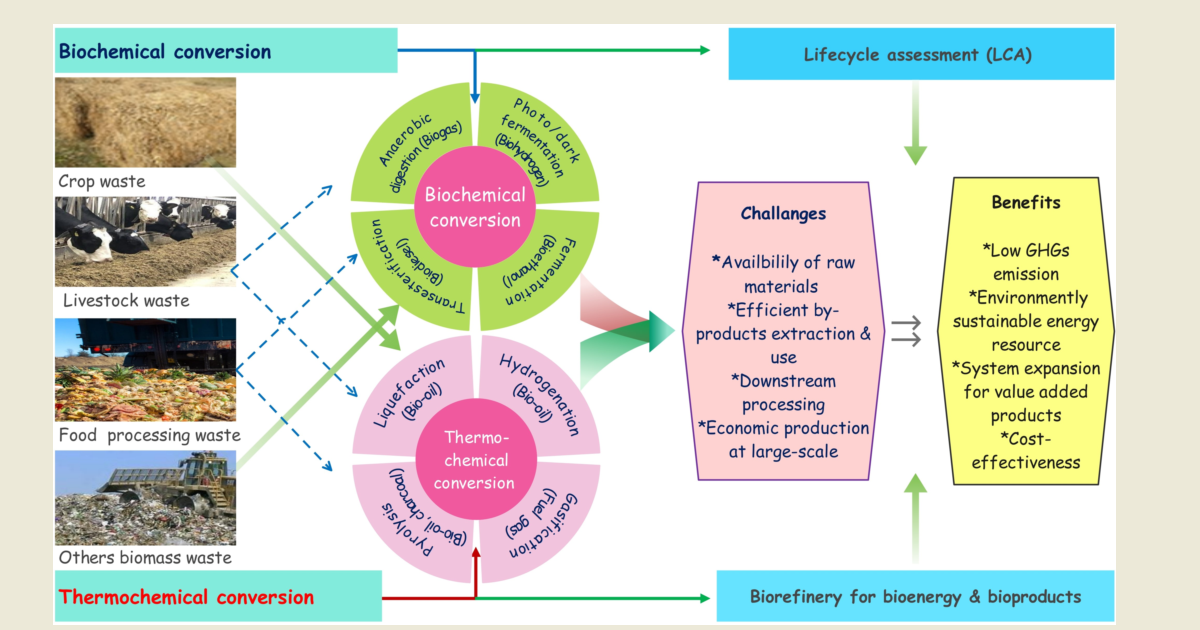Agriculture Waste Biomass Production for Bioenergy and Bioproducts
A special issue of Agriculture (ISSN 2077-0472). This special issue belongs to the section "Agricultural Systems and Management".
Deadline for manuscript submissions: closed (15 May 2023) | Viewed by 2796

Special Issue Editor
Special Issue Information
Dear Colleagues,
Fossil fuel use releases air pollutants and greenhouse gases responsible for air pollution and global climate change. In addition, they have negatively impacted the environment and biological systems. To fight these consequences, intensive measures are being taken globally to switch from fossil fuels to renewable bioenergies. Agriculture waste biomass, such as residues from crop products, food processing, waste materials from livestock, and agroforestry wastes, has enormous potential to produce various bioenergies and bioproducts. Biologically and thermochemically, biomass waste can be converted into alternative energy like bioethanol, biodiesel, biohydrogen, biogas, syngas, bio-oil, biochar, and many other valuable bio-products and chemicals. Bioenergy production from agricultural waste biomass is an eco-friendly alternative to fossil fuels. It is also helpful in achieving UN Sustainable Development Goals (SDGs) focus on the concerted global effort to assure access to affordable, reliable, sustainable energy for all. It is also anticipated that agriculture waste biomass production and its use for bioenergy and bioproducts will boost domestic energy demand and supply balance. Bioenergy and bioproducts as clean and green technology would play significant roles in sustainable circular economy development.
Dr. Shiv Prasad
Guest Editor
Manuscript Submission Information
Manuscripts should be submitted online at www.mdpi.com by registering and logging in to this website. Once you are registered, click here to go to the submission form. Manuscripts can be submitted until the deadline. All submissions that pass pre-check are peer-reviewed. Accepted papers will be published continuously in the journal (as soon as accepted) and will be listed together on the special issue website. Research articles, review articles as well as short communications are invited. For planned papers, a title and short abstract (about 250 words) can be sent to the Editorial Office for assessment.
Submitted manuscripts should not have been published previously, nor be under consideration for publication elsewhere (except conference proceedings papers). All manuscripts are thoroughly refereed through a single-blind peer-review process. A guide for authors and other relevant information for submission of manuscripts is available on the Instructions for Authors page. Agriculture is an international peer-reviewed open access semimonthly journal published by MDPI.
Please visit the Instructions for Authors page before submitting a manuscript. The Article Processing Charge (APC) for publication in this open access journal is 2600 CHF (Swiss Francs). Submitted papers should be well formatted and use good English. Authors may use MDPI's English editing service prior to publication or during author revisions.
Keywords
- agriculture
- biomass
- waste
- livestock bioenergy
- bioproducts green technology
- circular economy
- sustainable development
Benefits of Publishing in a Special Issue
- Ease of navigation: Grouping papers by topic helps scholars navigate broad scope journals more efficiently.
- Greater discoverability: Special Issues support the reach and impact of scientific research. Articles in Special Issues are more discoverable and cited more frequently.
- Expansion of research network: Special Issues facilitate connections among authors, fostering scientific collaborations.
- External promotion: Articles in Special Issues are often promoted through the journal's social media, increasing their visibility.
- Reprint: MDPI Books provides the opportunity to republish successful Special Issues in book format, both online and in print.
Further information on MDPI's Special Issue policies can be found here.





